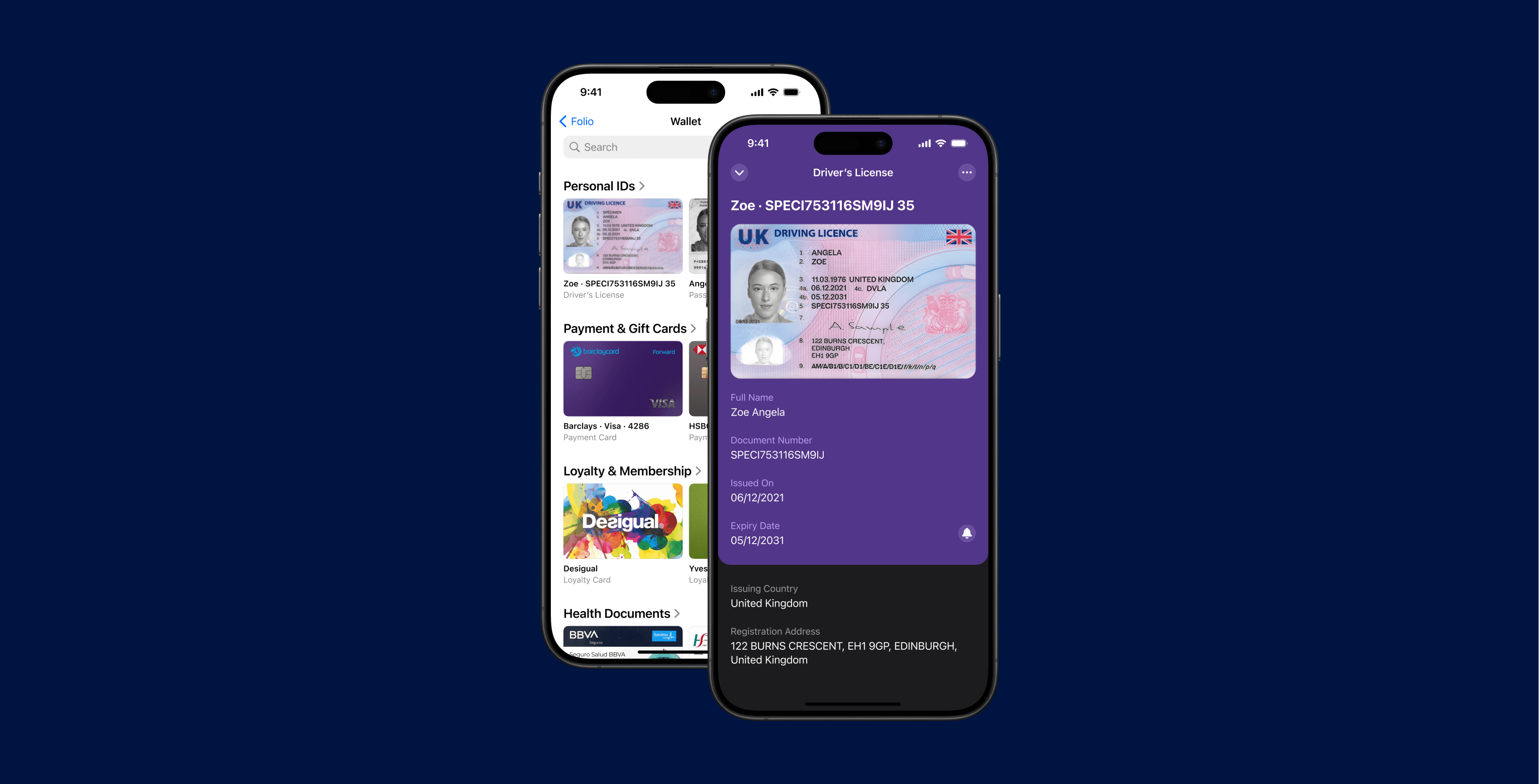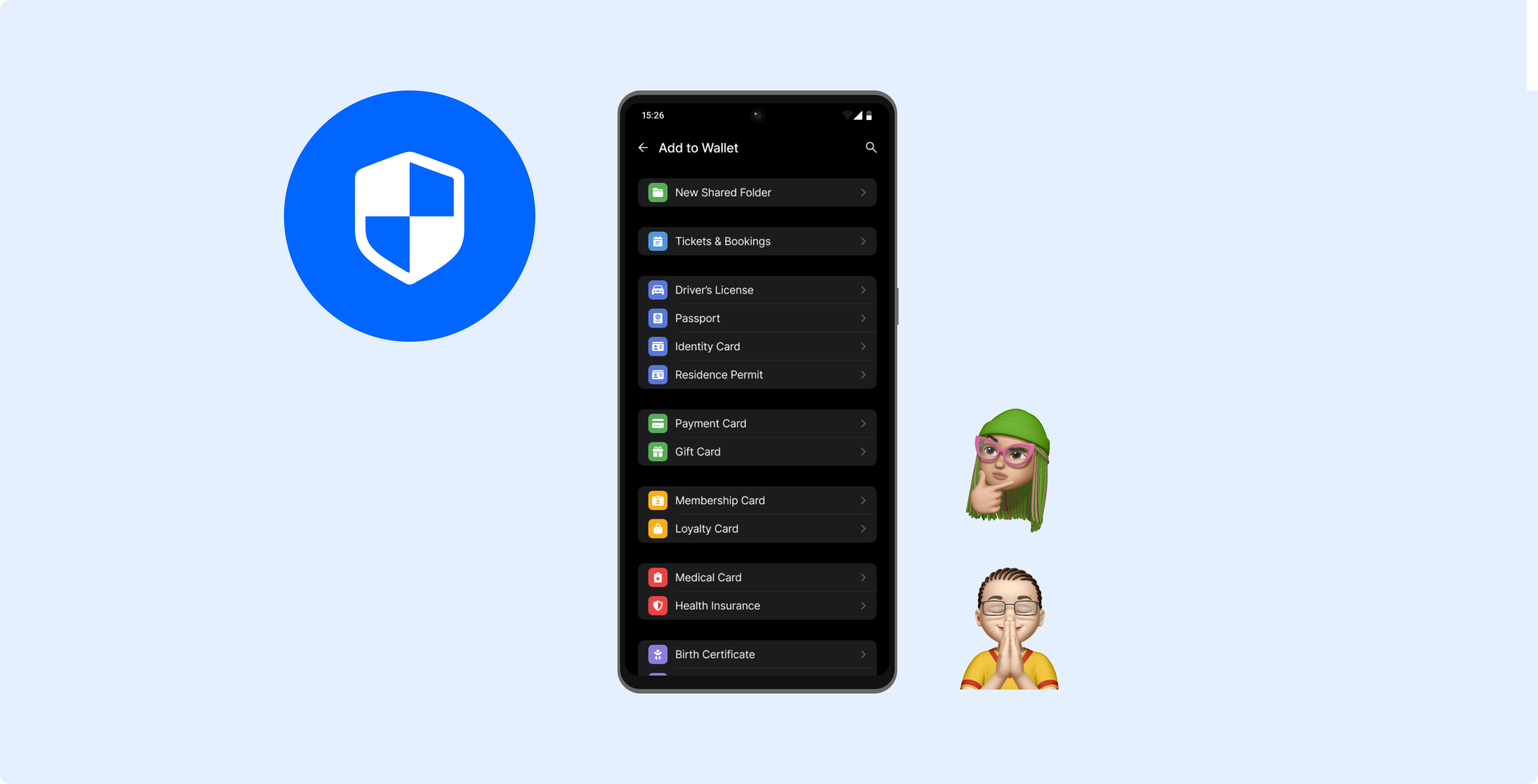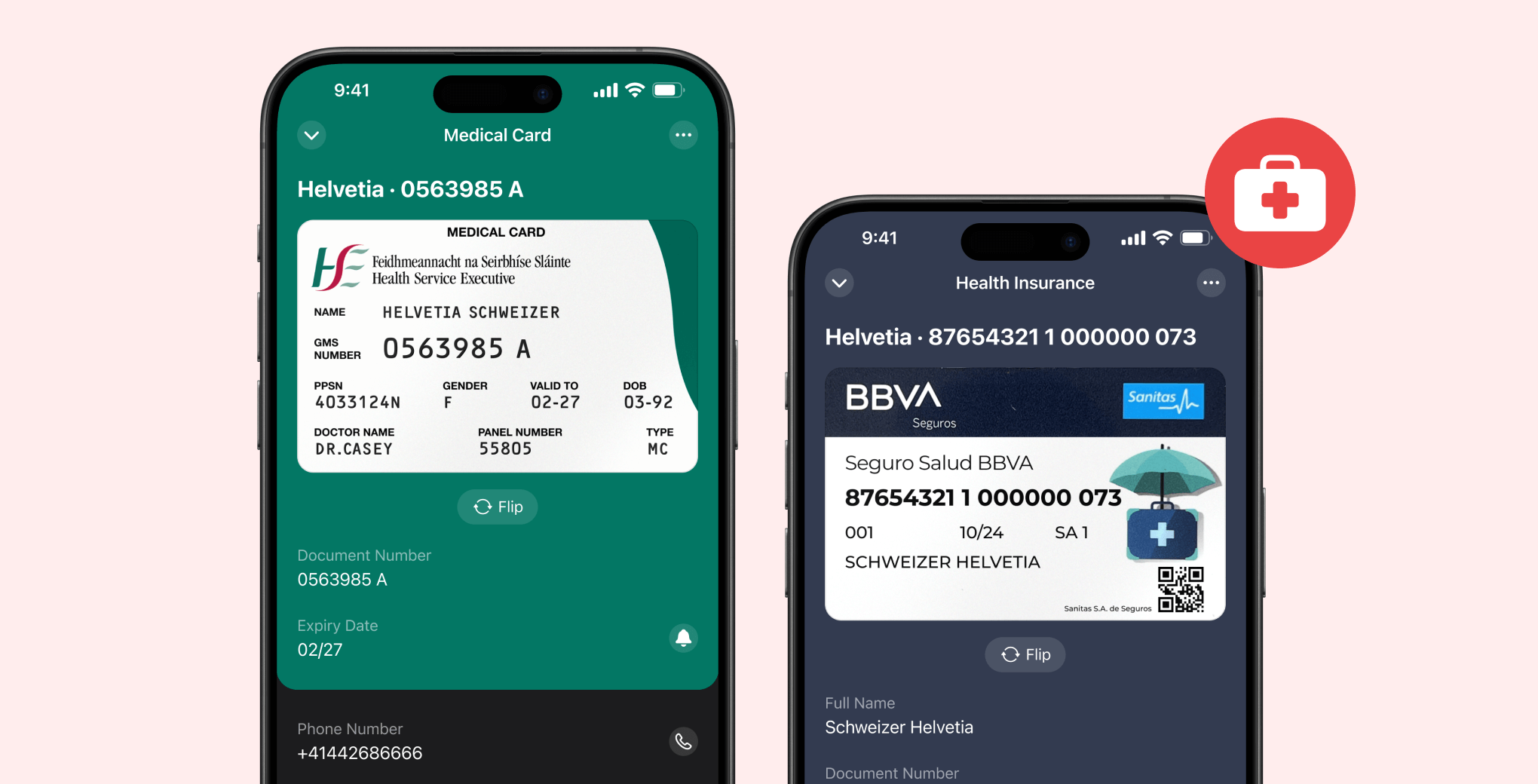Are Digital Wallets Safe to Use? Exploring Secure Digital Wallets

Introduction
As more people transition from physical wallets to digital ones, a common question arises: Are digital wallets safe to use? This article explores the security features, risks, and best practices associated with digital wallets, addressing common digital wallet security concerns.
What is a Digital Wallet?
A digital wallet is an app that stores your payment cards, loyalty and membership cards, IDs, and important documents like passports. It lets you make online or in-store payments and manage your information electronically on your phone.
Key Features of a Digital Wallet:
- Stores identification (IDs, passports)
- Stores payment cards (credit, debit)
- Manages loyalty and membership cards
- Facilitates secure online and in-store payments
What are the risks of using digital wallets?
Let's explore some of the most common risks associated with using digital wallets and how they might affect users.
Device Theft
One of the biggest risks of using a digital wallet is what happens if your device is lost or stolen. If a thief gains access to the device and the wallet isn’t protected by strong passwords, PINs, or biometric security like fingerprint or facial recognition, they may be able to access your digital wallet and make unauthorized transactions. While features like remote locking or wiping of devices can help mitigate this, they need to be enabled in advance. Using a strong passcode and enabling biometric authentication adds crucial layers of security in the event of theft.
Weak Passwords
Weak passwords are a common security flaw that can leave digital wallets vulnerable to attack. Many people reuse the same password across multiple accounts, and if one of those accounts is compromised, it can give attackers easy access to a user’s digital wallet. Passwords that are short, simple, or predictable make it easier for hackers to break in.
To prevent this, it’s important to use complex, unique passwords for your digital wallet and to take advantage of two-factor authentication (2FA) wherever it’s offered. This extra layer of protection ensures that even if someone manages to get hold of your password, they’ll still need another form of verification to access your wallet.
Phishing Attacks
Phishing is one of the most common ways cybercriminals attempt to steal sensitive information. In the case of digital wallets, phishing attacks can trick users into providing their login credentials or personal details by impersonating legitimate companies or service providers. This often comes in the form of fake emails, text messages, or websites that look like official wallet providers. Once the attacker has these details, they can use them to access the wallet and make fraudulent transactions.
To avoid falling victim to phishing, always verify the source of any communication asking for sensitive information and avoid clicking on links in suspicious emails or messages. Instead, go directly to the official website or app to log in.
Malware
Malware is another serious threat to digital wallet security. Malware can be installed on your device when you download unsafe apps, click on malicious links, or open infected files. Once it’s on your device, malware can steal your personal information, monitor your keystrokes (including passwords), or even give attackers control of your device. This can lead to unauthorized access to your digital wallet.
To minimize the risk of malware, it’s important to keep your operating system and apps up to date, avoid downloading apps from unknown sources, and use reputable security software to detect and remove threats.
Social Engineering
Social engineering is a technique used by attackers to manipulate people into providing sensitive information, often by pretending to be a trusted entity. For example, a fraudster might call or message a digital wallet user, pretending to be from the wallet provider or their bank, and claim that there’s an issue with the account. They might ask for the user's password, PIN, or verification codes to "resolve" the problem. In reality, they are attempting to gain access to the account.
To protect yourself from social engineering attacks, remember that legitimate companies will never ask for sensitive information in unsolicited communications. Always verify the identity of the person or organization before providing any information.
Digital Wallets vs. Physical Cards: Which is Safer?
The safety of digital wallets compared to physical cards largely depends on the context in which they are used. Each has its own advantages and potential risks.
Digital Wallets offer several advanced security features:
- They can be remotely locked or wiped if a device is lost or stolen, preventing unauthorized access.
- Biometric authentication, such as fingerprint or facial recognition, adds an extra layer of security.
- Transactions are often encrypted, ensuring that sensitive data is protected.
- Many digital wallets also offer real-time transaction tracking, allowing users to quickly detect and address any suspicious activity.
Physical Cards, on the other hand, have their own set of vulnerabilities:
- They are prone to theft or loss, and once in the wrong hands, can be used without much resistance, especially if a signature or PIN is not required.
- While physical cards are not at risk of online hacking, they can still be cloned or skimmed using devices that capture card data from magnetic strips or chips.
Overall, digital wallets tend to provide more security layers, particularly with encryption and biometric authentication. However, users need to be mindful of potential risks like device theft and phishing attacks to fully benefit from these features.

What is the safest digital wallet? How to Recognize a Secure Wallet.
Several key features distinguish a secure wallet from a less reliable one. Let’s explore these features and why they matter.
Strong Authentication
Secure wallets use multi-factor authentication (MFA), which requires two or more methods of verifying your identity before granting access. These methods might include something you know (a password or PIN), something you have (a phone or hardware token), and something you are (biometrics like a fingerprint or facial recognition). By requiring more than just a password, MFA makes it much harder for attackers to gain access, even if they manage to steal your login credentials.
- Biometric authentication (such as Face ID or fingerprint scanning) offers an additional layer of security. Since biometric data is unique to each individual, it’s far more difficult to replicate than a traditional password or PIN. Secure digital wallets leverage these features to ensure that only authorized users can access the wallet.
- Two-factor authentication (2FA) is a specific type of multi-factor authentication that typically involves a second step after entering a password. This could be a code sent to your phone, an authentication app, or even a biometric scan. 2FA acts as a double lock—if someone gets your password, they still need the second factor to break into your wallet. Many secure digital wallets offer 2FA as a standard feature, and it’s recommended to enable it wherever possible to add an extra layer of protection.
Encryption
When data is encrypted, it is converted into a coded format that can only be decoded with the correct key or password. In the case of digital wallets, encryption ensures that sensitive information like your payment details, card numbers, and personal data are protected while stored or during transactions. Many secure wallets use end-to-end encryption, which guarantees that the data is encrypted at all stages, preventing unauthorized access—even by the wallet provider itself. This makes it extremely difficult for hackers to intercept or steal your information.
Tokenization
Tokenization is a security process that substitutes sensitive data, like a credit card number, with a unique token or identifier that cannot be reverse-engineered to retrieve the original information. When you use a secure digital wallet, your actual card details are not transmitted; instead, the wallet sends a token, which is useless to anyone who tries to intercept it. This way, even if someone gains access to the transaction data, they cannot use it to make fraudulent purchases.
Compliance with Security Standards
A secure digital wallet should comply with industry regulations and security standards, such as the Payment Card Industry Data Security Standard (PCI DSS), General Data Protection Regulation (GDPR), and other regional privacy laws like CCPA/CPRA. These standards ensure that the wallet provider has implemented robust measures to protect your data.
Additionally, many secure wallets undergo independent security audits to verify their compliance with these regulations, ensuring that encryption, authentication, and data handling protocols are up to the highest standards.
Is my digital wallet safe to use?
When choosing a digital wallet, the security features you require will depend on how you plan to use the wallet. Wallets designed for managing loyalty cards demand fewer security measures compared to those that store financial information or process payments. The more sensitive the data, the stricter the security requirements should be.
Lower Security Requirements
For wallets that store only loyalty cards (such as Stocard or Key Ring), the security demands are minimal. Since these wallets don’t handle sensitive payment data, basic protections like encryption and device-level security (like PIN or biometric locks) are generally sufficient.
Higher Security Requirements
For wallets that hold multiple types of cards and documents —such as identity documents, payment methods, and loyalty cards—more robust security features become necessary. This includes tokenization, encryption, and biometric authentication. For example, Folio Wallet which stores a variety of data but doesn't process payments directly.
Highest Security Requirements
When your wallet is used to process financial transactions, the strictest security measures are essential. Digital wallets that handle payment processing, such as PayPal and Venmo, should have advanced security measures like end-to-end encryption, tokenization, biometric authentication, 2FA, and alerts for suspicious activity. These wallets also need to comply with rigorous regulations like PCI DSS and Anti-Money Laundering (AML) laws to ensure that user funds and personal data are protected.
Security Measures Offered by Different Digital Wallets
Many of the most popular wallets today implement advanced technology to protect users’ financial information and transactions. Here, we’ll break down the security features of Stocard, Folio Wallet, and PayPal.
Stocard
(stores only loyalty cards)
- PIN and Biometric Authentication.
- Compliance: GDPR.
Folio Wallet
(stores cards and documents, but doesn’t process payments)
- Tokenization: replacing sensitive information with a secure token during transactions.
- PIN and Biometric Authentication.
- End-to-End Encryption and Zero-Knowledge architecture, ensuring only the user can access the information.
- Alerts and Notifications: email and push alerts for suspicious activity.
- Compliance: GDPR and SOC 2.
PayPal
(processes payments)
- End-to-End Encryption for Transactions.
- Two-Factor Authentication (2FA).
- Tokenization for Payment Processing.
- Alerts and Notifications: email and SMS alerts for suspicious transactions.
- Compliance: GDPR, CCPA/CPRA, SOC 2, PCI DSS, and Anti-Money Laundering (AML) and Know Your Customer (KYC) laws.
How Can I Protect My Digital Wallet?
Even if your digital wallet comes equipped with strong security features, it’s essential to take additional steps to maximize protection.
Use Strong, Unique Passwords
One of the most critical measures is to ensure your digital wallet password is strong and unique. Reusing passwords across multiple accounts increases the risk—if one account is compromised, attackers can easily gain access to others. A strong password should be complex, combining upper and lowercase letters, numbers, and special characters. It’s also a good idea to use a password manager to generate and store secure, unique passwords for your digital wallet and other sensitive accounts. This prevents the temptation to use easily remembered, and therefore easily cracked, passwords.
Enable Two-Factor Authentication (2FA)
Always enable 2FA when available, as it greatly reduces the chances of unauthorized access. Many digital wallets support this feature, and it is one of the most effective ways to protect your account.
Use Biometric Authentication
Enable Biometric Authentication. Fingerprint or facial recognition are highly secure and complement passwords or PINs, making it much harder for unauthorized users to access your wallet, even if they have your device.
Turn On Notifications
Most digital wallets offer the option to send alerts via email or push notifications. Enabling notifications allows you to monitor your digital wallet for any suspicious activity. If something unusual happens, you can take quick action.
What should you do if my digital wallet is compromised?
If you suspect that your wallet has been compromised:
- Change your digital wallet password.
- Monitor Transactions closely for any unauthorized charges and report any suspicious activity to your bank or wallet provider.
- Contact Customer Support to notify the wallet provider of the potential fraud.
Additional Steps:
- Update software regularly to apply security patches.
- Avoid public Wi-Fi for secure transactions.
Conclusion: Are Digital Wallets Safe to Use?
The answer is generally yes—digital wallets are safe when used correctly. They offer multiple layers of security, including encryption, biometrics, and remote locking features. However, users must stay vigilant by using strong passwords, enabling 2FA, and keeping their software up to date. With these best practices, digital wallets provide a safer, more secure alternative to traditional payment methods.
FAQs











